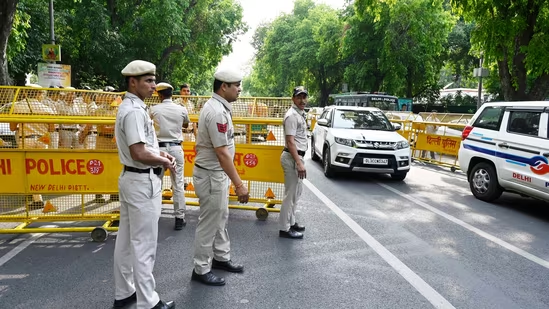This is why the rupee declined to an all-time low of 80 against the US dollar.

Rupee @ 80.It’s all over the news. Even if you were on a digital detox over the last week or so, you’ve probably heard about it by now.
The Indian rupee fell to a new all-time low of 80 against the US dollar this week. The rupee is down about 7% versus the dollar this year.
This has triggered questions, concerns, and emotions. The emotions are understandable. People are upset. Politicians are throwing mud at the government.
But the concerns and questions that arise at this time are more important than the knee-jerk emotions in response to the rupee’s decline.
First let’s understand the concerns.
The big concern
Well, there is one very big concern called ‘imported inflation’.
India is a net importing country. This means import more that we export. As per government data, in financial year 2021-22, India’s imports were $610.22 billion and exports were $417.81 billion.
As the US dollar is the world’s reserve currency, it’s also the world main invoicing currency for goods and services. If the US dollar gets stronger, i.e. the rupee gets weaker, the cost of imports goes up.
This will be the case even if the volume of imports remains the same. This means, all imported goods become more expensive. This is called imported inflation.
The cost of India’s big imports – crude oil, natural gas, minerals of all kinds, machinery, electrical equipment, appliances, chemicals – have all gone up significantly. This makes inflation in India, which is already high, harder to control.
For example, as a country, we can’t just reduce our consumption of crude oil. Thus, even if the price of crude oil stays constant in the international market, the cost of petrol will go up if the rupee falls against the dollar.
Imported inflation has made its presence felt in the Indian economy. It has added to the homegrown inflation and has made the life of the common man difficult.
Another concern is external debt.
This the debt denominated in foreign currency. Thus the principal and interest payments have to be made in foreign currency, usually US dollars. If the rupee weakens against the dollar, more rupees will be needed to repay the dollar loan.
As per the RBI, India’s external debt was $620.7 billion at the end of FY22. It’s a large number and it increased by $42.1 billion in one year. And with the dollar rising, corporates with external debt will find it increasingly difficult repay.
Now let’s discuss the questions raised by the decline in the rupee. Specifically we ask, why is the rupee falling and what is being done to stop it’s decline?
Reasons for the decline
There are a few big reasons for the rupee’s fall. The biggest one by far is the flow of capital to the US.
The US is usually an exporter of capital. It imports more than it exports. Its rich citizens invest abroad to increase the returns on their portfolios. Immigrants working in the US send money back to the home countries.
A country receiving significant capital from the US via exports, foreign investment (both FII and FDI), remittances tourism, etc, can run a deficit in their current account. This means it can import more than it exports. They can do this due to the cushion offered by all the money flowing in.
India has been a huge beneficiary of this trend. It has historically manged to maintain a current account deficit within a narrow range since 1991. It has not had too much of a problem funding it.
Of course a natural outcome of this is a steadily depreciating currency. This is not a problem in good times when money is flowing in. In fact even if money is flowing out, it’s still not a problem as long as the currency is stable and the current account deficit is low.
This was the case with India in FY22. The current account deficit was low at 1.2% of GDP. The rupee was relatively stable. FDI was flowing in. The growth in exports was strong.
Thus, the market wasn’t too worried about FIIs selling like there was no tomorrow.
The situation is different now.
Commodity prices including crude oil spiked when the Russia-Ukraine war began. These commodities were trending higher even before the war. The war made India’s imports more expensive.
The rupee also started to decline as more money fled to the safety of US dollars and fears of persistently high inflation kicked in.
FIIs have withdrawn about $14 billion in this financial year so far. Add to that the current account deficit is expected to be 2.9% of GDP this year.
The second reason for the rupee’s decline compounded the problem – Interest rate hikes in the US.
Inflation in the US is at a four decade high. The CPI is withing touching distance of 10%.
The US Federal Reserve has been hiking interest rates aggressively to counter inflation. All indications point to even more aggressive rate hikes in the near future. This makes the US dollar stronger by increasing its demand in two ways.
First, investors get higher risk-free interest from US government bonds. This attracts more money to the US.
Second higher interest rates increase the likelihood of a recession. This has been the talk of the town in financial markets for many months.
The probability of a recession in the US has increased recently and this has made markets fearful. In a fearful environment, money tends to look for the safest investment. US government bonds fulfil that role perfectly. This further increases the flow of money to the dollar.
These reasons have been driving the US dollar higher against most currencies around the world. And the rupee is no exception.
What is being done to halt the decline?
The government and the RBI have been trying to boost the rupee for a while. They have taken many measures to that effect.
The RBI has intervened spent more than $40 billion of India’s foreign exchange reserves in the defence of the rupee. It has intervened in the forex market numerous times to lower the volatility in the rupee.
It has recently announced a raft of measures, including settling foreign trade in rupees, to help strengthen the currency.
The government has announced measures like raising the duties on gold and petroleum products.
However the markets are not impressed with these moves at least as far as the short term is concerned.
Conclusion
The talk on the street right now is that the rupee will depreciate to 82 in the short term against the US dollar.
If you’re looking for investing ideas, we suggest watching this video – How to Profit from a Rising US Dollar.
Also read our recent pieces on how IT stocks benefit from a falling rupee and the 5 stocks that can gain from a falling rupee.
Disclaimer: This article is for information purposes only. It is not a stock recommendation and should not be treated as such.






























